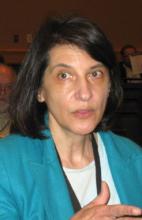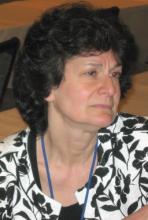Arbaclofen is the active isomer of racemic baclofen, which was approved by the Food and Drug Administration in 1977 for treating spasticity in multiple sclerosis patients aged 12 and up. Baclofen also is widely used in the treatment of spasticity in cerebral palsy patients, many of whom are much younger than age 12. Its safety is well established. Baclofen is a strongly sedating drug; roughly one-third of cerebral palsy patients have to discontinue it for that reason. Yet only 8% of arbaclofen-treated patients in the phase II study reported any sedation.
Intranasal oxytocin
Oxytocin levels have been shown to be decreased in children with ASD; oxytocin-related genes are associated with increased risk for ASD; and patients with ASD have increased methylation of the oxytocin receptor. Therein lies the therapeutic rationale for exogenous oxytocin therapy.
Oxytocin is being used by thousands of patients as a complementary and alternative therapy for ASD, with numerous anecdotal reports of good benefit and tolerability but no published data. Internet pop-up ads tout oxytocin as "the love hormone." Alternative medicine providers use a host of different preparations and doses, typically with no monitoring of vital signs or documentation of outcomes. It’s not a healthy situation.
"We felt like it was time to act now," noted Dr. Linmarie Sikich, a psychiatrist at the University of North Carolina, Chapel Hill.
She and her coinvestigators therefore obtained a grant from Autism Speaks to conduct a phase II feasibility study in which 25 children with autistic disorder by DSM-IV criteria were randomized to 8 weeks of double-blind, twice-daily intranasal oxytocin flexibly dosed at 4-64 IU daily or placebo, followed by open-label oxytocin for all for an additional 8 weeks, then 3 months off-treatment before final follow-up. Eleven children were nonverbal, and 14 had fluent speech.
Oxytocin therapy was associated with improvement in multiple measures of social functioning, compared to placebo. Moreover, the benefits remained stable, and in some cases, increased during the 3 months after the end of treatment. Even the low-functioning, nonverbal young children were able to tolerate intranasal oxytocin.
Typical parental reports were that their child was more engaged at school, more compliant at home, more tolerant of peers, and better able to recognize the feelings of others, Dr. Sikich said.
The phase III SOARS-B study entails 6 months of double-blind intranasal oxytocin or placebo, then 6 months of open-label oxytocin for all, followed by 6 months off-therapy. Potential biomarkers of response as well as genetic samples are being obtained.
"We think the core social symptoms that are our target aren’t going to change in 8 weeks," she said "We think seeing meaningful clinical change is going to take more time."
Oxytocin is off patent. It lacks profit potential. As a result, pharmaceutical industry interest in developing it as an ASD therapy is nil. So Dr. Sikich and her academic colleagues are trying to do so, going so far as to arrange for intranasal oxytocin to be compounded in the United States to avoid the unpredictable shipment delays from European suppliers that occurred in the phase II study. She described working with the Food and Drug Administration in this effort as an eye-opening experience fraught with numbing hassles, bureaucratic indecision, and delays.
"Collaborating with pharma is a lot easier. I was not at all prepared for all of the things we’ve had to do that pharma typically does, and all of the associated costs," she said.
D-cycloserine
An antibiotic used as a second-line treatment for tuberculosis, D-cycloserine is a partial glycine agonist that binds with glutamate at the NMDA receptor to promote calcium conductance and normalize NMDA neurotransmission.
Based upon favorable animal studies, Dr. Maria R. Urbano and her colleagues conducted a 10-week uncontrolled, randomized, double-blind trial comparing D-cycloserine once-daily at 50 mg or once-weekly at 50 mg for 8 weeks in 20 patients with ASD. Participants were 14-25 years old, and all had an IQ above 70. Dr. Urbano chose this age range deliberately.
"I’m particularly interested in older adolescents and young adults with ASD, because in this group it’s imperative to try to interact socially as they try to launch from their families. There are too many of my patients who are sitting at home at age 20 or 21 doing nothing," observed Dr. Urbano, a psychiatrist and codirector of the ASD program at Eastern Virginia Medical School, Norfolk.
Ten of the 20 patients were deemed clinical responders based upon at least a 16-point (1 standard deviation) improvement in scores on the Social Responsiveness Scale. The mean improvement over the course of the study was 17.9 points, with no differences in the rate or magnitude of response between the two dosing arms. Since the efficacy was the same, once-weekly dosing will be used in the placebo-controlled trial now being planned. Once-weekly dosing might lessen the risk of side effects or tachyphylaxis, she noted.



